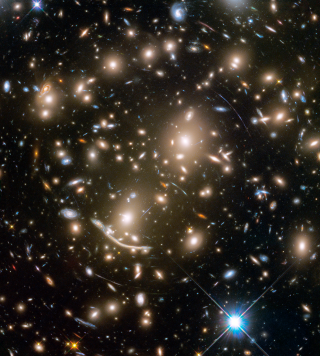Bibcode
Cuomo, Virginia; Hee Lee, Yun; Buttitta, Chiara; Aguerri, J. Alfonso L.; Maria Corsini, Enrico; Morelli, Lorenzo
Referencia bibliográfica
Astronomy and Astrophysics
Fecha de publicación:
5
2021
Revista
Número de citas
24
Número de citas referidas
23
Descripción
Context. More than 10% of barred galaxies with a direct measurement of the bar pattern speed host an ultrafast bar. These bars extend well beyond the corotation radius and challenge our understanding of the orbital structure of barred galaxies. Most of the bars are found in spiral galaxies, rather than in lenticular galaxies.
Aims: We analyse the properties of the ultrafast bars detected in the Calar Alto Legacy Integral Field Spectroscopy Area Survey to investigate whether they are an artefact resulting from an overestimation of the bar radius and/or an underestimation of the corotation radius or a new class of bars, whose orbital structure has not been understood yet.
Methods: We revised the available measurements of the bar radius based on ellipse fitting and Fourier analysis and of the bar pattern speed from the Tremaine-Weinberg method. In addition, we measured the bar radius from the analysis of the maps tracing the transverse-to-radial force ratio, which we obtained from the deprojected i-band images of the galaxies retrieved from the Sloan Digital Sky Survey.
Results: We found that nearly all the sample galaxies are spirals with an inner ring or pseudo-ring circling the bar and/or with strong spiral arms, which hamper the measurement of the bar radius from the ellipse fitting and Fourier analysis. According to these methods, the bar ends overlap with the ring or the spiral arms, thereby making the adopted bar radius unreliable. On the contrary, the bar radius from the ratio maps are shorter than the corotation radius. This agrees with the theoretical predictions and findings of numerical simulations regarding the extension and stability of the stellar orbits supporting the bars.
Conclusions: We conclude that ultrafast bars are no longer observed when the correct measurement of the bar radius is adopted. Deriving the bar radius in galaxies with rings and strong spiral arms is not straightforward and a solid measurement method based on both photometric and kinematic data is still missing.
Aims: We analyse the properties of the ultrafast bars detected in the Calar Alto Legacy Integral Field Spectroscopy Area Survey to investigate whether they are an artefact resulting from an overestimation of the bar radius and/or an underestimation of the corotation radius or a new class of bars, whose orbital structure has not been understood yet.
Methods: We revised the available measurements of the bar radius based on ellipse fitting and Fourier analysis and of the bar pattern speed from the Tremaine-Weinberg method. In addition, we measured the bar radius from the analysis of the maps tracing the transverse-to-radial force ratio, which we obtained from the deprojected i-band images of the galaxies retrieved from the Sloan Digital Sky Survey.
Results: We found that nearly all the sample galaxies are spirals with an inner ring or pseudo-ring circling the bar and/or with strong spiral arms, which hamper the measurement of the bar radius from the ellipse fitting and Fourier analysis. According to these methods, the bar ends overlap with the ring or the spiral arms, thereby making the adopted bar radius unreliable. On the contrary, the bar radius from the ratio maps are shorter than the corotation radius. This agrees with the theoretical predictions and findings of numerical simulations regarding the extension and stability of the stellar orbits supporting the bars.
Conclusions: We conclude that ultrafast bars are no longer observed when the correct measurement of the bar radius is adopted. Deriving the bar radius in galaxies with rings and strong spiral arms is not straightforward and a solid measurement method based on both photometric and kinematic data is still missing.
Proyectos relacionados

Evolución de Galaxias en Cúmulos
Las estructuras en el Universo, a todas las escalas de masa, se han formado de una forma jerárquica y principalmente producidas por fusiones de galaxias. Sin embargo, esta formación jerárquica de las galaxias está modulada por el entorno en el cual se crean y evolucionan. Mientras que las galaxias de campo presentan una evolución pasiva, los
Jairo
Méndez Abreu